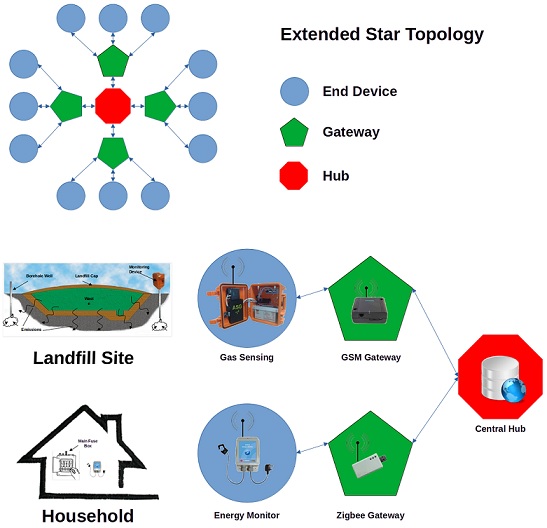In the era of connectivity and smart technologies, the integration of the Internet of Things (IoT) has transformed various industries, including environmental monitoring. This guide explores the synergy between IoT and CO2 gas analyzers, delving into how the integration of these technologies enhances the capabilities of analyzers, provides real-time data insights, and contributes to more efficient and sustainable environmental practices.
Understanding CO2 Gas Analyzers
- Principles of CO2 Gas Analysis
CO2 gas analyzers are instruments designed to measure the concentration of carbon dioxide in a given environment. They operate on principles such as non-dispersive infrared (NDIR) absorption, chemical absorption, tunable diode laser absorption spectroscopy (TDLAS), or cavity ring-down spectroscopy (CRDS), providing accurate and reliable measurements of CO2 levels.
- Importance of CO2 Monitoring
Monitoring CO2 levels is crucial for various applications, including environmental monitoring, industrial processes, climate research, and medical settings. The data obtained from CO2 gas analyzers informs decision-making, helps in regulatory compliance, and supports efforts to mitigate the impact of human activities on the environment.
IoT Integration with CO2 Gas Analyzers
- IoT: Connecting the World of Devices
The Internet of Things refers to the interconnected network of devices, sensors, and systems that communicate and share data seamlessly. By integrating IoT with CO2 gas analyzers, these devices become part of a broader ecosystem that enables real-time data transmission, remote monitoring, and intelligent decision-making.
- Remote Monitoring Capabilities
One of the primary benefits of IoT integration is the ability to monitor CO2 levels remotely. With connected sensors and analyzers, data can be transmitted in real time to a centralized system, allowing users to monitor environmental conditions from anywhere with internet access.
- Data Accessibility and Visualization
IoT integration facilitates easy access to data through cloud-based platforms. Users can visualize CO2 concentration trends, set threshold alerts, and generate comprehensive reports. This enhanced accessibility empowers decision-makers to respond promptly to changes and make informed choices based on real-time data.
Enhanced Precision and Efficiency
- Continuous Monitoring and Reporting
Traditional CO2 gas analyzers often provide periodic measurements. IoT integration enables continuous monitoring, capturing data points at regular intervals. This continuous flow of information allows for a more detailed understanding of fluctuations in CO2 levels and ensures that no critical changes are missed.
- Automated Calibration and Maintenance
IoT-enabled CO2 gas analyzers can include features for automated calibration and maintenance alerts. The integration of sensors and systems allows the device to self-diagnose and notify users when calibration is required, ensuring the accuracy and reliability of measurements over time.
- Real-time Analytics for Smart Decision-Making
The integration of IoT enables real-time analytics, providing insights into CO2 concentration patterns and correlations with other environmental variables. This smart analytics capability facilitates data-driven decision-making, allowing users to optimize processes, reduce emissions, and enhance overall operational efficiency.
Applications of IoT-Integrated CO2 Gas Analyzers
- Environmental Monitoring
In the realm of environmental monitoring, IoT-integrated CO2 gas analyzers offer unparalleled advantages. Whether tracking atmospheric CO2 levels, assessing the impact of human activities on ecosystems, or studying climate change, real-time data is essential for informed decision-making and policy formulation.
- Industrial Processes
IoT integration in industrial settings enhances the monitoring and control of CO2 emissions. Real-time data allows industries to optimize processes, minimize energy consumption, and ensure compliance with environmental regulations. This integration supports sustainable practices and the efficient management of resources.
- Smart Buildings and Indoor Air Quality
Within the domain of smart buildings, IoT-integrated CO2 gas analyzers contribute to indoor air quality monitoring. By continuously measuring CO2 levels, building management systems can implement ventilation strategies to enhance occupant comfort and well-being.
- Medical Applications
In medical settings, where accurate monitoring of CO2 levels is critical, IoT integration enhances the capabilities of analyzers. Real-time data transmission allows for immediate responses in respiratory monitoring equipment, ensuring patient safety in critical care and anesthesia settings.
Challenges and Considerations
- Data Security and Privacy
The integration of IoT introduces concerns related to data security and privacy. Ensuring that data transmitted from CO2 gas analyzers is secure and compliant with privacy regulations is essential, especially when dealing with sensitive information in medical or industrial contexts.
- Interoperability and Standardization
The diverse landscape of IoT devices may lead to interoperability challenges. Standardization efforts are crucial to ensuring seamless communication between different devices and platforms, allowing for the integration of CO2 gas analyzers with other sensors and systems.
- Power Consumption and Sustainability
IoT devices, including CO2 gas analyzers, rely on power sources for continuous operation. Balancing the need for real-time monitoring with energy efficiency is important to ensure sustainable and cost-effective deployments, particularly in remote or resource-constrained environments.
Future Trends and Innovations
- Edge Computing for Real-time Processing
Edge computing is emerging as a trend in IoT, allowing data processing to occur closer to the source (at the edge of the network). This trend has implications for CO2 gas analyzers, enabling real-time processing of data at the device level, reducing latency and enhancing responsiveness.
- Integration with Artificial Intelligence (AI) and Machine Learning (ML)
The integration of AI and ML algorithms with IoT-enabled CO2 gas analyzers holds promise for advanced analytics. These technologies can analyze vast datasets, identify patterns, and predict future trends, offering new insights into environmental dynamics and industrial processes.
Conclusion
In conclusion, the integration of the Internet of Things with CO2 gas analyzers represents a transformative leap in environmental monitoring and industrial processes. From real-time remote monitoring to enhanced precision, efficiency, and smart decision-making, IoT integration opens up new possibilities for sustainable practices and resource optimization. As technology enthusiasts embrace this convergence, it is crucial to address challenges related to data security, interoperability, and power consumption while exploring future trends that promise even more sophisticated applications of IoT in the realm of CO2 monitoring. The fusion of IoT and CO2 gas analyzers paves the way for a connected, intelligent, and environmentally conscious future.
